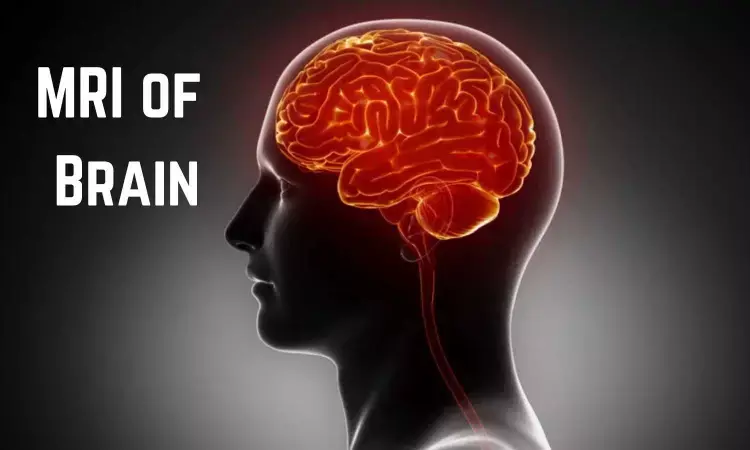- Home
- Medical news & Guidelines
- Anesthesiology
- Cardiology and CTVS
- Critical Care
- Dentistry
- Dermatology
- Diabetes and Endocrinology
- ENT
- Gastroenterology
- Medicine
- Nephrology
- Neurology
- Obstretics-Gynaecology
- Oncology
- Ophthalmology
- Orthopaedics
- Pediatrics-Neonatology
- Psychiatry
- Pulmonology
- Radiology
- Surgery
- Urology
- Laboratory Medicine
- Diet
- Nursing
- Paramedical
- Physiotherapy
- Health news
- Fact Check
- Bone Health Fact Check
- Brain Health Fact Check
- Cancer Related Fact Check
- Child Care Fact Check
- Dental and oral health fact check
- Diabetes and metabolic health fact check
- Diet and Nutrition Fact Check
- Eye and ENT Care Fact Check
- Fitness fact check
- Gut health fact check
- Heart health fact check
- Kidney health fact check
- Medical education fact check
- Men's health fact check
- Respiratory fact check
- Skin and hair care fact check
- Vaccine and Immunization fact check
- Women's health fact check
- AYUSH
- State News
- Andaman and Nicobar Islands
- Andhra Pradesh
- Arunachal Pradesh
- Assam
- Bihar
- Chandigarh
- Chattisgarh
- Dadra and Nagar Haveli
- Daman and Diu
- Delhi
- Goa
- Gujarat
- Haryana
- Himachal Pradesh
- Jammu & Kashmir
- Jharkhand
- Karnataka
- Kerala
- Ladakh
- Lakshadweep
- Madhya Pradesh
- Maharashtra
- Manipur
- Meghalaya
- Mizoram
- Nagaland
- Odisha
- Puducherry
- Punjab
- Rajasthan
- Sikkim
- Tamil Nadu
- Telangana
- Tripura
- Uttar Pradesh
- Uttrakhand
- West Bengal
- Medical Education
- Industry
Does synthetic brain MRI gives superior image quality than conventional MRI?

China: The benefits of synthetic MRI translate into better patient care and, therefore, might replace conventional MRI for evaluating brain health, a recent study published in Acta Radiologica has suggested.
"MDME (multiple-delay-multiple-echo) sequence-derived synthetic MRI has similar diagnostic performance and image quality with a shorter acquisition time compared to conventional MRI," the researchers wrote in their study. "However, there is a need to consider the high signal intensity within the superior sagittal sinus on synthetic T1-weighted images."
Previous studies have shown that synthetic MRI (magnetic resonance imaging) might replace the conventional MR sequences for brain evaluation to obtain multiple quantitative parameters and shorten scan time.
"Synthetic MRI images are generated by MDME sequences that create up to 10 different contrast images and three quantitative maps (proton density, T2, and T1); the technique offers more cost-effective access to MRI data and shortens scanning time, as conventional MRI requires obtaining separate multiple contrast-weighted images," the research team explained.
Mengsha Zou from Sun Yat-sen University in Guangzhou, PR China, and colleagues aimed to evaluate the image quality of MDME sequence-derived synthetic brain magnetic resonance images compared to conventional images by considering a multi-age sample.
For this purpose, the researchers included image sets of synthetic and conventional MRIs of 200 participants. The participants were divided into a pathological group and a normal group based on the presence of intracranial lesions. Two neuroradiologists compared the unordered and anonymous images. Artifacts, image quality, and diagnostic performance were analyzed.
The study revealed the following findings:
- In the quantitative analysis, MDME sequence-derived synthetic MRI demonstrated an equal/more excellent signal-to-noise ratio and contrast-to-noise ratio (CNR) in all age groups compared with conventional images.
- Specifically, for people aged ≤2 years, synthetic T2-fluid-attenuated inversion recovery imaging revealed a significantly higher cerebellum grey/white matter CNR.
- In the qualitative and artifact analyses, synthetic MRI demonstrated good imaging quality (≥3 points) in all brain structures except for the superior sagittal sinus and cranial nerves.
- In most participants (90.7%), high signal intensity was found within the superior sagittal sinus on synthetic T1-weighted imaging.
- The researchers observed no difference between synthetic and conventional MRI in lesion diagnosis.
Compared to conventional MRI, MDME sequence-derived synthetic MRI showed similar diagnostic performance and image quality with a reduced acquisition time in a comprehensive analysis of brain structures in a large and multi-age sample.
The researchers noted, "possibility of high signal intensity within the superior sagittal sinus on synthetic T1-weighted images should be considered to avoid thrombus misdiagnosis."
They conclude, "these findings pave the way for the clinical utility of synthetic MRI in evaluating the brain."
Reference:
1. Zou M, Zhou Q, Li R, et al. Image quality using synthetic brain MRI: an age-stratified study. Acta Radiologica. 2023;0(0). doi:10.1177/02841851231152098
Dr Kamal Kant Kohli-MBBS, DTCD- a chest specialist with more than 30 years of practice and a flair for writing clinical articles, Dr Kamal Kant Kohli joined Medical Dialogues as a Chief Editor of Medical News. Besides writing articles, as an editor, he proofreads and verifies all the medical content published on Medical Dialogues including those coming from journals, studies,medical conferences,guidelines etc. Email: drkohli@medicaldialogues.in. Contact no. 011-43720751


